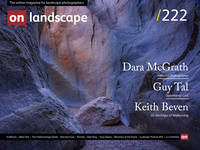Do You Know What You’re Missing?
People who set aside a special time and place in their lives for creative thinking and work—for instance, waking up with the sunrise each morning to write in the quiet of the early hours or meditating before a painting session—also tend to score higher on measures of creative potential. In contrast, those who are more motivated to develop a final product … tend to score lower in creative potential and intrinsic motivation and higher in stress and extrinsic (reward-oriented) motivation. Those who derive enjoyment from the act of creating and feel in control of their creative process tend to show greater creativity than those who are focused exclusively on the outcome of their work. ~ Scott Barry Kaufman & Carolyn Gregoire. Wired to Create
Edward Weston wrote in his Daybooks, “If I have any ‘message’ worth giving to a beginner it is that there are no short cuts in photography.” In the literal sense, Weston was wrong. There are many shortcuts in photography—from the old Kodak slogan, “You Press the Button, We Do the Rest” (coined in 1888, when Weston was just two years old, and perhaps even more apt today in the age of smartphones and sky replacement algorithms), to the plethora of present-day computerised effects making it easy to produce striking photographs instantly with little effort. Photographic shortcuts were common in Weston’s day, too, which is why I believe what he meant in fact was not that shortcuts in photography don’t exist, but that many of them are ultimately not worth taking.



